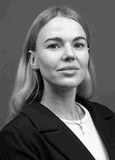The correlation of physical development and results of the training process of young gymnasts
Keywords:
young gymnasts, anthropometric indicators, harmony of physical development.Abstract
Objective of the study was to evaluate the influence of compensatory exercises on the harmony of physical development and the efficiency of the body parts of young gymnasts as a single kinematic system.
Methods and structure of the study. 24 young gymnasts aged 13.5±0.5 years with anthropometric indicators: height – 155.6±7.5 kg; weight – 48.4±7.5 cm; chest girth – 81.7±5.9 cm. A method was used based on the distribution of all variants of the studied indicator into ranges from minimum to maximum values. To train and assess the ability to muscle balance and joint flexibility, the following were used: Romberg test; Kraus-Weber test, leg abduction in the supine position; leaning forward while sitting; twisting of the torso; tilts to the side.
Results and conclusions. The sporting achievements of young gymnasts at the age of 13 are largely determined by rational technique corresponding to morphological data, as well as biological development, the primary prerequisites of which are anthropometric characteristics. Compensatory exercises, used with a specialized focus on the development of the main muscle groups included in the kinetic links of performing gymnastic combinations, are one of the training options and can reduce the negative impact of unidirectional load on young gymnasts.
References
Bakaev V.V., Bolotin A.E., Vasilyeva V.S. et al. Struktura i soderzhaniye modeli trenirovki marafontsev s uchetom osobennostey mekhanizma energoobespecheniya myshechnoy deyatelnosti. Teoriya i praktika fizicheskoy kultury. 2023. No. 8. pp. 92-94.
Bolotin A.E., Bakaev V.V., Van Zwieten K.Ya. et al. Differentsirovannaya podgotovka plovtsov-marafontsev k sorevnovaniyam na otkrytoy vode s uchetom tipov energeticheskogo metabolizma. Teoriya i praktika fizicheskoy kultury. 2020. No. 10. pp. 37-39.
Vinogradova O.P., Morozova L.V., Melnikova T.I. et al. Korrektsiya polozheniya tulovishcha legkoatletok-sprinterov na osnove izmeneniya posturalnogo balansa. Teoriya i praktika fizicheskoy kultury. 2024. No. 1. pp. 31-33.
Kolesnikov N.V., Poniasov O.E., Fursov V.V. et al. Faktornaya struktura predsorevnovatelnoy podgotovki skorokhodov vysokoy kvalifikatsii. Teoriya i praktika fizicheskoy kultury. 2023. No. 7. pp. 90-92.
Morozova L.V., Poniasov O.E., Bystrova I.V. Ekzogennyye faktory razvitiya khudozhestvennoy gimnastiki v sovremennykh usloviyakh. Teoriya i praktika fizicheskoy kultury. 2023. No. 7. pp. 13-15.
Poniasov O.E., Pugachev I.Yu., Paramzin V.B. et al. Kinematicheskiy analiz tekhniki plavaniya na osnove sinkhronnoy videozapisi lineynogo dvizheniya. Teoriya i praktika fizicheskoy kultury. 2023. No. 1. pp. 14-16.
Poniasov O.E., Romanenko N.V., Barchenko S.A. et al. Sensomotornaya integratsiya v sovershenstvovanii
slozhnykh igrovykh koordinatsiy khokkeistov. Teoriya i praktika fizicheskoy kultury. 2022. No. 2. pp. 97-99.
Bakayev V., Bolotin A., & You C. (2018). Reaction of vegetative nervous system to loads in female long-distance runners with different fitness level. Journal of Human Sport and Exercise, 13 (2proc). pp. 245-252.
Bolotin A.E., Bakayev V., Ponimasov O.E., Vasilieva V. Peculiarities of respiratory functions in qualified swimmers exposed to multidirectional
physical loads. Journal of Human Sport and Exercise. 2022. Vol. 17. No. 4. pp. 860-866.


